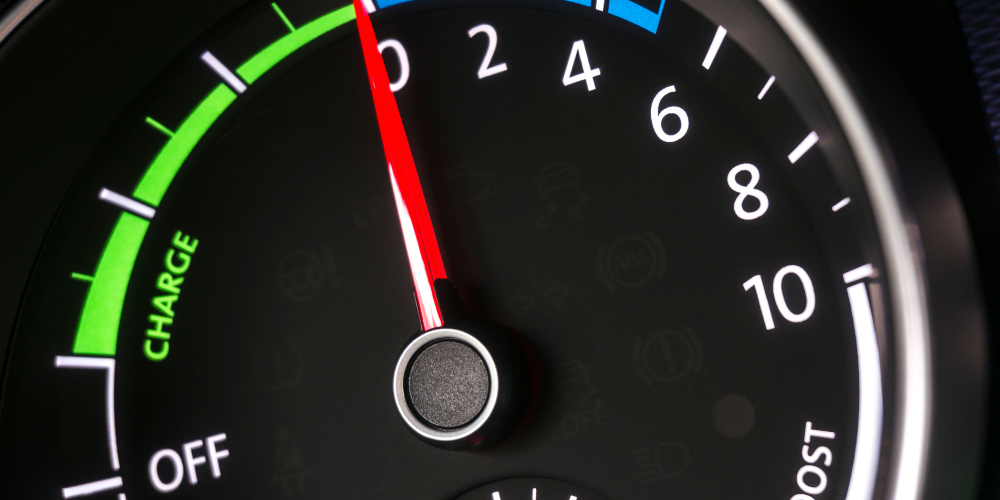Electric vehicle buyers go through a natural feeling of “range anxiety” or fear of the EV not having sufficient charge to complete its full journey. Agreed, range anxiety is a valid feeling to have but only to an extent, and as we will show, it really is not justified for the majority of people.
The truth is that EV range is over-thought and exaggerated by many. Let’s start with some facts:
THE DAILY COMMUTE
In September 2017, Streetlight Data produced the Commutes Across America, a study that compiled millions of data points. The research aimed to demonstrate the median commute (one-way) distances state by state, city by city, and by ZIP code in the US.
In Canada, the government gathers this information through the Statistics Canada Services, AKA Stats-Can.
According to Streetlight Data research, living in Maine means that there is at least a 50% certainty that your commute is less than 10 miles. This means that the distance travelled when going to work and coming home would be a total of about 20 miles. You can add a few miles for errands in between, such as buying groceries, picking up the dry cleaning, and taking the kids to soccer or hockey practice after work. However, if you live in Wyoming, your one-way commute is likely to be 5.7 miles or a little under 6 miles, which means your two-way commute can be expected to be a little under 12 miles.
The difference between Maine and Wyoming isn’t that dramatic. Once you look into the Streetlight Data study you may discover which states have the highest median commute distances. Bishop, CA, is an outlier city that has a median of 70.2 miles, while Ocean Pines, MD, has a median commute distance of 29.2 miles.
The study shows, that the majority of drivers in the United States, drive about 37.28 miles, equivalent to approximately 60km, or less per day.
In Canada, the study “Results from the 2016 Census: Long commutes to work by car” by Tetyana Yaropud, Jason Gilmore, and Sébastien LaRochelle-Côté for Stats-Can indicated that approximately only 7% of all commuters have long commutes. And that the median distance to work in the largest cities was: Toronto 6.83 miles or 11 km, Montreal 5.6 miles or 9 km, and Vancouver 5 miles or 8 km.
True, there are other areas far from the major cities, so when one looks at the average distance driven in a year, the longest distance driven in a year goes to Newfoundland and Labrador with an average of 11,249 mi or 18,100 km. that when divided by 50 weeks and 5 days a week we get 45 miles or 72 km per day (note, weekends are not included)
DRIVING AN EV IN A CITY
Data on ratings and standard efficiency of every EV, shows the driving ranges of each EV on the market. Here one can see that the median driving range of an EV is 205 miles on a full battery, or per full charge. This means any EV can take you to work and back home for a couple of days and still have a charge left in the battery.
It also means that for the daily commute, four hours of charge per night is more than enough for the majority of EV owners. For instance, an EV with an efficiency rating of 402.2 Wh/mi or 250 Wh/km charged for four hours with a Level -2 charger rated at 6.2kW, will charge a range of 60.8 mi.
Contrast that with the most efficient vehicle as of last year, with a rated efficiency of 247.8 Wh/mi or 154 Wh/km charged for four hours with the same Level-2 charger it will accumulate a range of 98.7 miles (almost 100 mi).
However, with every rule, there are exceptions. Chambers, AZ, where you can experience a one-way median commuting distance of 106.1 miles, four hours of charge will not work. Of course, Chambers represents an extreme case.
In these outlier cases, if you would like to eliminate range anxiety, it would be wise to have an EV charger at both ends of your commute – home and work, and you will likely require a fully dedicated charger for your EV.
EV CHARGING
EV charging infrastructure is in its development stages. Knowing that most EV owners prefer to charge at home, installing an EV charger may not be as easy. Charging infrastructures that leverage EV Energy Management Systems, provide charging to more vehicles than the actual capacity would allow, by intelligently sharing the existing electrical infrastructure and delivering enough charge to each EV for the next day commute. Additionally, EVEMS’ provide useful insight into real-time energy consumption in charging. As a user, it helps to know when the charging infrastructure is fully subscribed and to see that you’re getting what you should be during each charge.
Thanks to the EPA, the efficiency ratings of all EVs are publicly available. Using that data and the output of a Level-II charger at 208 Volts and 30 Amperes, for example, an average four-hour charge using a Level-II charger provides a range of 83 miles – which is more than enough for a work day for most commuters.
According to research, nearly half of current EV drivers don’t encounter any problems at all when it comes to being able to charge their cars when they need to.
One way to avoid costly and lengthy service upgrades is to install an EV Energy Management System or simply a demand controller, which is available whether you live in a Multi-Unit Building (MUD) or a single dwelling. Make sure that it is matched with the right charger.
Even if you live in Bishop, CA, or Chambers, AZ, which has the highest median commute averages, there are options to eliminate range anxiety. All you would need is an EV with a bigger battery for an extended range; like the new F-150 or a TESLA Y – both of which boast 300 miles of range. Another option would be ensuring that you can charge at both ends of your commute.
In closing, the technology available today with the battery capacity and the ability to charge at home, even if it is for a reduced time, provides more than enough power for the daily commute. Don’t let your anxiety get in the way of enjoying driving a very silent vehicle, with high torque, and fast acceleration, which in addition will help you reduce your carbon footprint.


